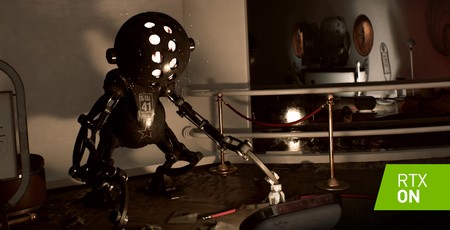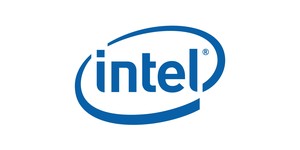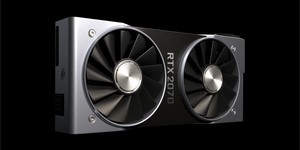
Nvidia has made good on last month’s promise to enable ray tracing support on non-RTX graphics cards by releasing a driver update enabling DirectX Raytracing (DXR) for selected GTX GPUs.
Nvidia took considerable flak from online communities last month following the reveal of the Neon Noir real-time ray tracing demo. Released by Crytek, it was shown running at perfectly playable frame rates on none other than the AMD Radeon RX Vega 56, a GPU with zero processing units dedicated to ray tracing. The obvious implication was that real-time ray tracing can be achieved on today’s high-end GPUs, throwing the value of Nvidia’s dedicated RT Cores into serious question. RT Cores are exclusive to the Nvidia RTX family of GPUs, and until now these have been the only GPUs capable of running real-time ray tracing in the handful of games and demos that currently support it.
Nvidia’s response is an interesting one: release a driver enabling ray tracing in its more recent GTX GPUs, thus allowing technical press and consumers to turn the effect on in games and – presumably – show clearly the difference that RT Cores can make, while allowing existing customers to not feel left out. Today, it has just done just that, and users running Pascal- and Turing-based GTX cards can start playing with rays by downloading the DXR ready driver. After all, it’s not that other GPUs can’t process ray tracing commands issued via DXR (an extension of the DX12 API), but more that Nvidia (and AMD, it should be noted) have - until now - decided that the effect would be too demanding for such GPUs to make enabling it at the driver level worth it. This remains true for AMD; there is no indication thus far that it is planning to enable DXR in any of its card, despite the Neon Noir demo running on AMD hardware.
For Pascal users, you need to be running at least a GTX 1060 6GB; for Turing users, both GTX 1660 Ti and GTX 1660 now support DXR. Interestingly, Nvidia says the concurrent integer and float processing found in the Turing architecture means the GTX 1660 Ti and GTX 1660 will perform better relative to older Pascal parts, with Nvidia’s own figures (pinch of salt required) suggesting the GTX 1660 Ti can match the GTX 1080 in certain ray tracing workloads as a result. For cards lower than GTX 1060 6GB, Nvidia has decided they have neither the frame buffer nor the required horsepower to make enabling ray tracing at all worth it.
To coincide with the DXR driver release, tech demos for both Justice and the unreleased Atomic Heart, two games set to feature real-time ray tracing, are likewise being made available, as well as the previously-unreleased Star Wars Reflections demo. While not true in-game benchmarks, they do force GPUs to render ray tracing in real-time. That said, we're currently unclear on whether these will be released publicly or just to the press and Nvidia partners - we've asked for clarification on this point. Update 11/04/2019: The Game Ready Driver for Anno 1800 with extended DXR support for GTX GPUs is available via the Nvidia GeForce driver download page. You can also download the three new tech demos directly from the following links:

MSI MPG Velox 100R Chassis Review
October 14 2021 | 15:04








Want to comment? Please log in.